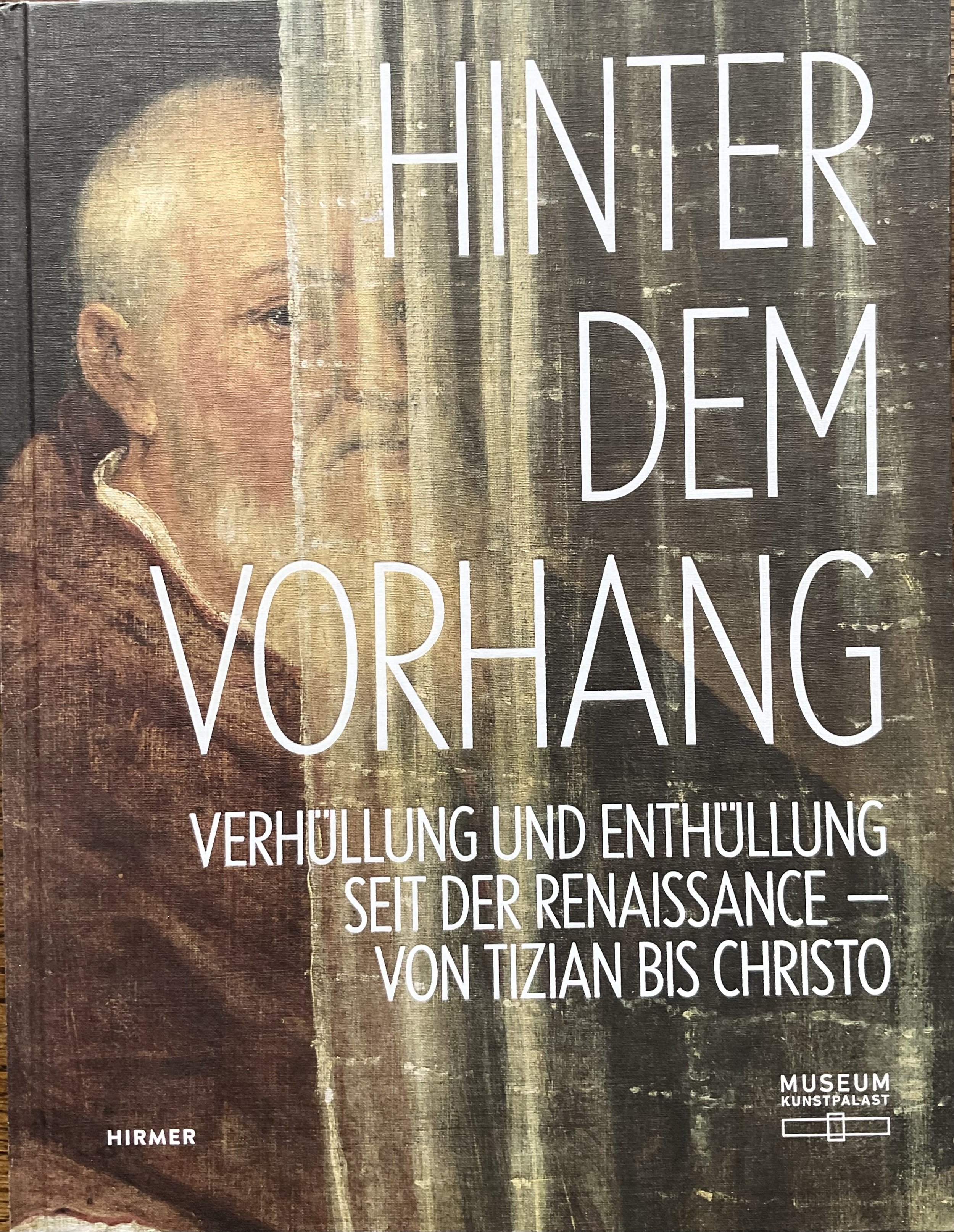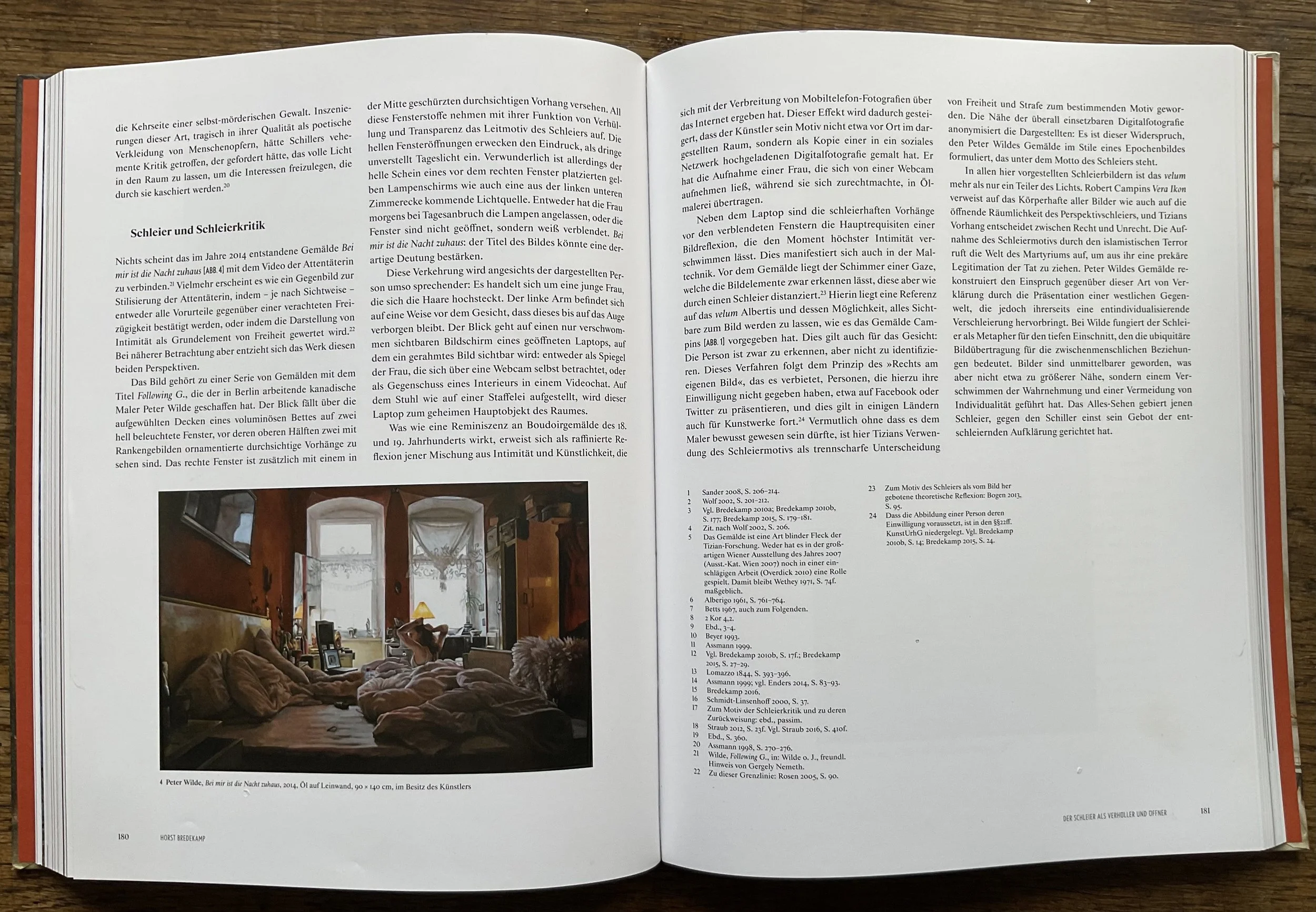The Versatile Perfectionist, Peter Wilde
The Versatile Perfectionist, Peter Wilde by Dirk Lehr for International Paneling
Berlin
The German-Canadian painter Peter Wilde is the chameleon among figurative painters. He changes his style, his subject and his aesthetic so frequently that he finds himself in a constant race with his obsession with painting at such a rapid pace. While other artists try to make a style their trademark, Wilde takes the exact opposite path. He successfully escapes any labeling of his work.
However, this is not a concept or conscious alternative to painterly recognition that others work tirelessly on. It is Wilde's DNA to jump back and forth within the genre painting and make us believe that we are dealing with a multiple personality. He is not concerned with his identity, but rather with trying out and expanding painting in all directions. The remarkable thing about it is that this happens with a perfection that leaves you amazed.
Peter Wilde, “Yellow Dress,” 2023, Acrylic on Canvas
Whether hyperrealistic or photorealistic painting, fragile figurative or conceptual painting - Wilde works tirelessly on everything that painting offers. Wilde’s “fuel” is curiosity. He enjoys the game of trying things out.
In his series of works Following G. for example, he painted every photograph that a person he did not know published on their Facebook account. Wilde wanted to know whether he could get to know a person by photorealistically painting their photos and thus every private detail of their surroundings, every freckle on their face or damage to their skin, etc.
In “Installations” he portrayed celebrities in passport photo format, like Angela Merkel, Barack Obama or Madonna. The installation, consisting of up to 70 individual panels, shows the alienation of the person in different phases, from the photorealistic image to a few rough brush strokes. The amazing thing is that the person can still be recognized even when only a blurry outline can be seen.
Wilde thus brings to light how familiar we are with people we have never met, simply because their images are omnipresent. With the portraits of Angela Merkel, Wilde made it onto the Tagesschau, one of the most important news programs on German TV.
In his most recent works, Wilde presents to us monkeys. They sit between opulent bouquets of flowers, on expansive armchairs, on antique tables or on an antique knight's helmet. They wear yellow chiffon dresses or baroque pink silk skirts. Despite their opulence, they don't look like Kitsch at all. You have to smile, but you still feel uneasy. Maybe that's because of the way the monkeys look at us. They cast bright, clear looks at us, sometimes proud, sometimes shy and sometimes scared. In addition, the monkeys sometimes appear very fragile - in contrast to their opulent surroundings. These works impress with their perfection again, this raises their decorative arrangements to a higher level.
DER SCHLEIER ALS VERHÜLLER UND ÖFFNER, Horst Bredenkamp for HINTER DEM VORHANG, Museum Kunst Palast
Displaced
Dr. Shermin Voshmgir
"Displaced is an intriguing new body of work by German-Canadian, Peter WIlde. While format and style differ from his prior body of works, the subject of his new Series is true to what he always explored: the subtle exposure of human emotion in one picture, or this case, painting. A contemporary young adult in the context of an old and traditional building. An oversized, sometimes deformed human body, dominating the settings of a big historic building, that seems under-proportioned compared to the protagonists and the story they tell. It's a story of cultural displacement. The children of a young multicultural society that are confronted, often frustrated or emotionally crushed by the outdated and antiquated notion of the nation stated and the uniform cultural identity it defends."
Peter Wilde and Social Media
R.M. Vaughan
Throughout his two decades of exhibiting paintings, sculptures, and installation, Peter Wilde has
explored the idea of community with equal amounts of enchanted vigour and bemused scepticism.
From early sculptural portraits derived from (intentionally) failed communication strategies, strategies concocted by Wilde himself, to a series of works that sought to assemble loose communities of strangers into idiosyncratic “families” known to the artist -- high school students, his child’s baby sitters, fellow diabetics, his former wife’s fellow women Anglican priests, phone sex enthusiasts, male hustlers and the staged families found in reality television – Wildehas created a vast and varied, teeming lif narrative, the narrative of an artist fascinated by human commonalities and the processes by which strangers become friends.
In other words, Peter Wilde was creating social media long before the social media explosion.
Wilde’s current paintings turn the prevalence of social media on its head by examining not how communities are constructed via portals such as Facebook and Twitter, but, rather, how the medium of photography, allegedly a method of capturing the immediate and the real, has worked in tandem with social media to turn self-portraiture into a profoundly inexact science. In Wilde’s explorations, social media does not reflect its subjects, it refracts them, smashes them into uncountable fragments.
Using the self-generated images (of everything from picnics and parties to studio-style “head and shoulder” shots) posted online by Wilde’s former assistant’s 20-something friends -- and only those images made public in 2008 the first year of the social media boom – Wilde has created a body of paintings that show not only a group of attractive young people at play but also a group of young people at play with media itself; a generation of image-based diarists who thrive in a limitless stream of available photographic styles, qualities, compositional and observational strategies (and, obviously, competency) and without any apparent boundaries around intimacy. And, by choosing to replicate found portraits in paint, Wilde adds yet another layer of removal to what is already a self/other, public/private hall of mirrors.
Semiotic twists and turns aside, Wilde’s new works are first and foremost captures of youth in all its glory and foolishness: beautiful youth, wasted youth, youth’s self-indulgence and youth’s nagging insecurity.
Given Wilde’s keen critical gaze (the machinations of social media and the processes of communal self-identification, are, after all, hardly new to this artist), the paintings are surprisingly loving, even tender. Wilde is proving that the more we turn ourselves into instant (and fleeting) objects for casual inspection, the more, conversely, human we remain
42 Obamas
Samuel Jablon, Associate Art Editor, Guernica Magazine, 2013
We are immersed in the digital age were our profile picture makes our first impression. In a way it is our self-portrait, and it is how we represent ourselves. Facebook let’s us have five thousand friends, but how is it possible to actually know these people? We relate to each other through digital images, but how do we actually know someone in the digital age?
Peter Wilde plays with notions of public and private, he questions and explores how people present themselves through social media. Wilde replaces painting from life with digital images, because the digital image is life.
In the Obama series Wilde paints from the first image Obama uploaded on Facebook. He uses the profile picture as a form of appropriated realism. Wilde takes the portrait of Obama that launched his candidacy in 2007, the image the world knows, and transforms it through paint in a humorous and affectionate attempt to humanize Obama. Wilde states, “Obama’s Facebook profile seemed to be an invitation to know him intimately.” How does one really know someone’s habits and quirks through social media, let alone the leader of the free world? Is it possible?
Wilde uses the intimacy and warmth of paint to evoke and portray Obama’s personality.
He captures the refined, elegant, imprecise, vague, muzzled, sightless, commanding, formidable, and powerful sides of the leader. He says, “I wanted to know if I painted the same image enough if I could know him intimately, knowing that I could not.” A digital images does not breath, blink, sweat, and it does not smell. The digital image is perfect, and there is no room for those awkward moments that make us human.
The paintings are about paint as much as they are about subject. There is a clear fondness to the medium and subject. Each painting informs and leads to the next painting. Wilde created a system that was clearly irrational. He states, “The planned failed constructed strategy was seeing the profile on Facebook as an invitation to intimacy...”
Legalizing Painting
Peter Donohue, Hastings Independent Press
Berlin based Canadian artist Peter Wilde challenges the notion of copyright and the implications of using digital media images to make art by inviting members of the public at last night's private view of 'A New Language' - a major international art exhibition at the Observer Building Hastings, part of the Root 1066 festival of contemporary arts - to photograph him create a new image (from an old one) and so create new 'copyright holders'. In the process of this performance the current issue of hastingsindependentpress.co.uk which includes a four-page pull-out promoting the exhibition becomes a piece of artwork too, which the artist gracefully signed for us.

